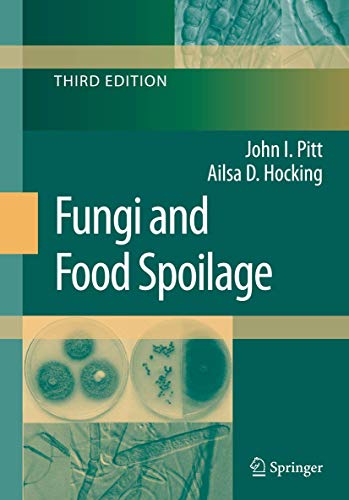Artículos relacionados a Fungi and Food Spoilage

"Sinopsis" puede pertenecer a otra edición de este libro.
The first and second editions of Fungi and Food Spoilage established a reputation as the foremost book on foodborne fungi. This completely revised and updated third edition is an invaluable reference for food microbiologists investigating fungal spoilage and sources of mycotoxin contamination in foods.
The introductory chapters of the book deal with the ecology of food spoilage and give an overview of how food processing, packaging and storage affect fungal growth. Subsequent chapters cover the fundamentals of classifying and naming fungi and current methods for isolation and enumeration, including general and special purpose media, incubation conditions, etc. The major part of the book provides keys, descriptions and illustrations of all yeasts and moulds commonly encountered in foods. Characteristics of the species, including their ecology and potential for mycotoxin production, are also included.
The broad and practical nature of the coverage will appeal to microbiologists, mycologists and biotechnologists in the food industry, academic, research and public health institutions.
Dr John Pitt and Dr Ailsa Hocking are both Honorary Research Fellows at CSIRO Food Science Australia, North Ryde, NSW, Australia.
"Sobre este título" puede pertenecer a otra edición de este libro.
- EditorialSpringer
- Año de publicación2009
- ISBN 10 0387922067
- ISBN 13 9780387922065
- EncuadernaciónTapa dura
- Número de edición3
- Número de páginas520
Gastos de envío:
EUR 3,50
A Estados Unidos de America
Los mejores resultados en AbeBooks
Fungi and Food Spoilage
Descripción Hardcover. Condición: Good. Connecting readers with great books since 1972! Used textbooks may not include companion materials such as access codes, etc. May have some wear or writing/highlighting. We ship orders daily and Customer Service is our top priority!. Nº de ref. del artículo: S_327179079
Fungi and Food Spoilage
Descripción Hardcover. Condición: Like New. Like New. book. Nº de ref. del artículo: ERICA77303879220676

